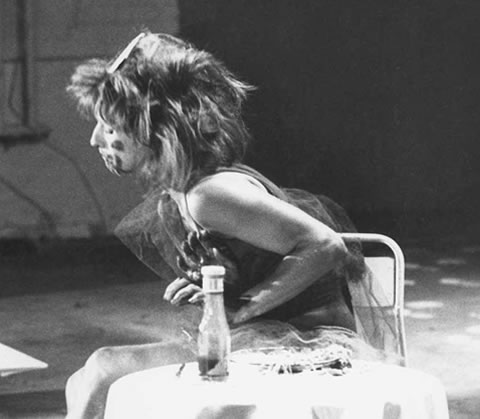“Everybody needs to play,” says Fiona Griffiths, the actor and choreographer who recently taught an eight-week course in clowning at Hart House. “That’s the really great thing about clowning – we get to play. We think that as adults we shouldn’t.”
“Clowning Around” was part of Hart House’s Creative Classes, a series of courses in acting, filmmaking and photography introduced last fall. While clowning is great training for actors, she says – allowing them to dig deeper into their characters and act instinctually and authentically onstage – anyone can benefit from unearthing their inner clown. “There are therapeutic benefits of laughter,” says Griffiths. “It relieves stress, stimulates your immune system and improves oxygenation. Your dopamine receptors go crazy.”
Griffiths is a veteran of Canada’s small but vibrant clowning scene, and she travels prepared: at one point she roots around her purse and triumphantly produces a red nose, which she waggles at the end of its elastic strap. “I never travel without an emergency nose,” she says with a laugh. But for Griffiths, laughter isn’t the only emotion involved in clowning. She is a devotee of Pochinko Clowning, a deeply emotive style – in contrast to the highly stylized and structured clowning of the European tradition – developed by the Canadian Richard Pochinko in the 1970s. It encourages unstructured play and mask work to promote a state of emotional freedom. Often that emotion is joy – but not always. Griffiths’ first clown character was Mabel, a failed ballerina who longs to dance Swan Lake but instead ends up choking to death on spaghetti at her own birthday party (at which she is the only attendee). The performance itself is a piece of slapstick, rooted in deep melancholy. “Clowns tell the truth,” says Griffiths, and sometimes that truth is ugly. Griffiths’ Hart House class, though, accentuated the positive, to create a feel-good bubble where grown-ups could forget their jobs, PhD theses or mortgages and concentrate on just having fun again, through music, movement and improvisational games. “I’ve noticed over the years that students are more and more out of their body,” says Griffiths, noting they can be wrapped up with their Blackberrys, high-def TVs and Facebook statuses. Clowning, she says, helps them “connect with themselves again.” Griffiths adds: “The only technology is the red nose.”
Recent Posts
U of T’s 197th Birthday Quiz
Test your knowledge of all things U of T in honour of the university’s 197th anniversary on March 15!
Are Cold Plunges Good for You?
Research suggests they are, in three ways
Work Has Changed. So Have the Qualities of Good Leadership
Rapid shifts in everything from technology to employee expectations are pressuring leaders to constantly adapt






